On View
See Inside a New Show Exploring the Afterlife Through the Lens of Tibetan Buddhist and Christian Art
'Death Is Not the End' at the Rubin Museum of Art is on view through January 14, 2024.
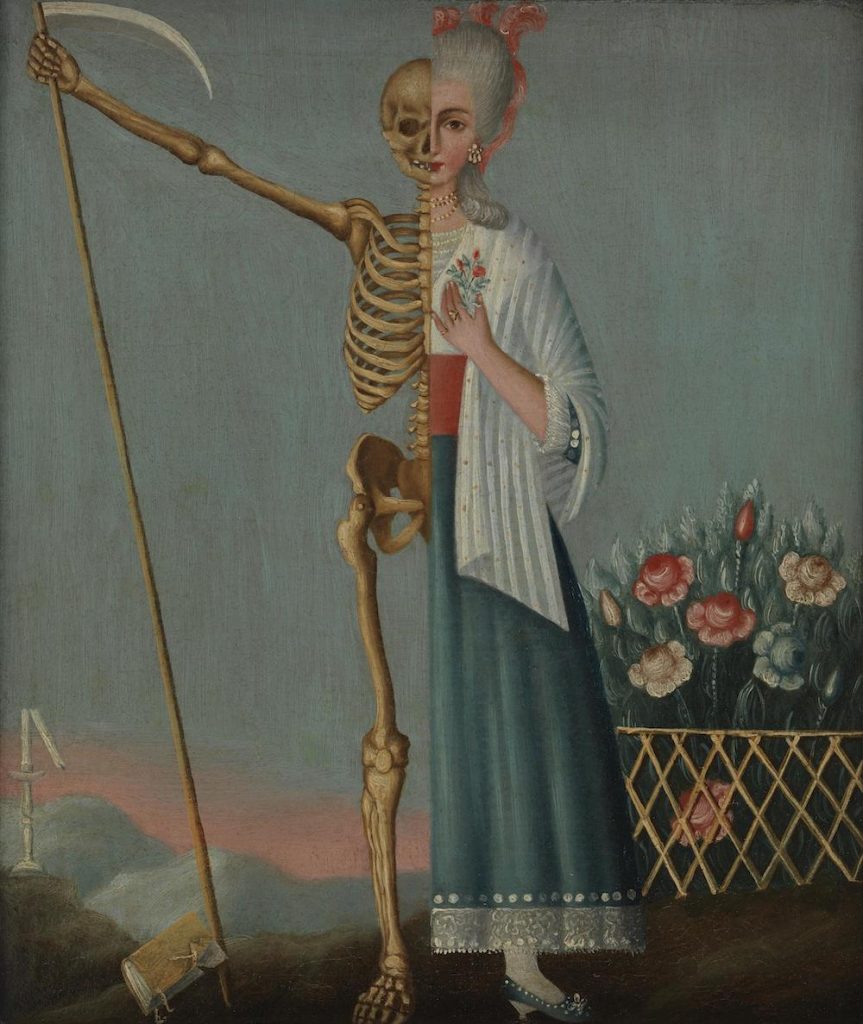
'Death Is Not the End' at the Rubin Museum of Art is on view through January 14, 2024.

Artnet News

“When you’re sad and when you’re lonely and you haven’t got a friend / just remember that death is not the end,” Bob Dylan sang in 1988, offering listeners a comforting reminder that mystery awaits us after our time on Earth.
Fittingly, the Rubin Museum of Art’s new exhibition shares the song’s title—and its central message.
On view now through January of next year, “Death Is Not the End” looks at depictions of the afterlife across the art of both Tibetan Buddhism (the museum’s thematic focus) and Christianity. It’s an idea with which the two religions share a fascination, even if they otherwise differ in many respects.
“I wanted to show the universality of this topic,” the show’s curator, Elena Pakhoutova, told Artnet News. “My intention was to pair the most familiar cultural framework in the United States, Christianity, with a lesser known, Tibetan Buddhism, so that visitors could see the consistent inquiry of these themes across cultures and time periods—the willingness to continue to exist and refute the permanence of death with the belief that there is something after.”
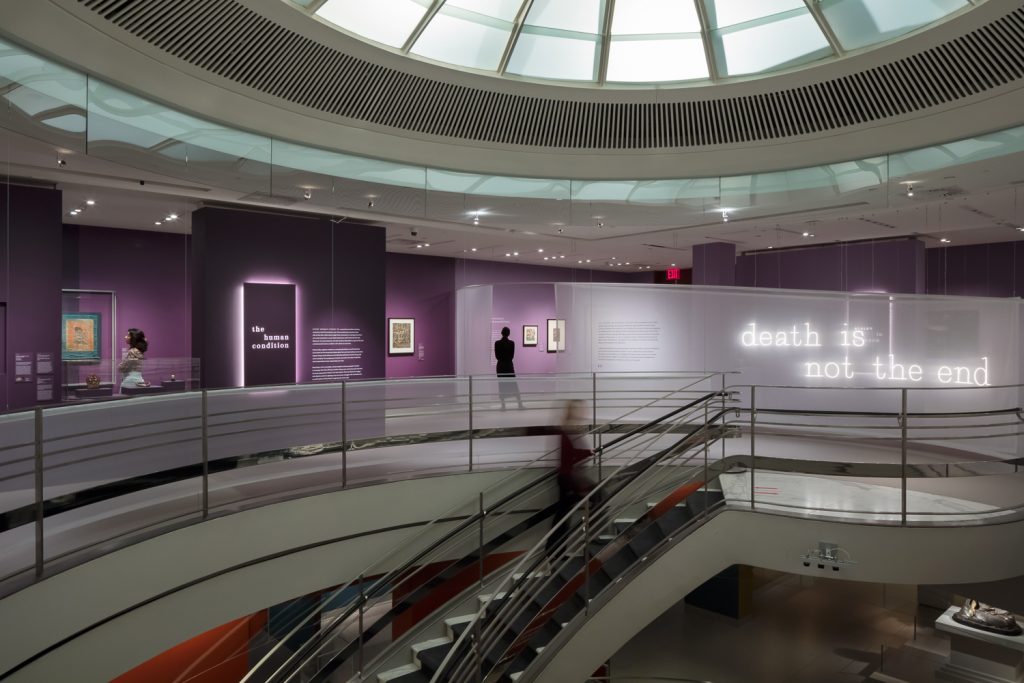
Installation view of “Death Is Not the End,” at the Rubin Museum of Art. Photo: David de Armas. Courtesy of the Rubin Museum of Art.
Included in Pakhoutova’s presentation are paintings, prints, illuminated manuscripts, ritual objects, and dozens of other objects that collectively span 12 centuries. They’re organized into three themes: “The Human Condition,” “States In-Between,” and “(After)life.”
As an experience, the curator explained, the show is both heavy and hopeful.
“The themes of the show, death and the afterlife, can be difficult to think about, emotionally as well as intellectually, Pakhoutova said. “Among the emotions that I imagine visitors would feel could be grief, fear, uncertainty, surprise, curiosity.”
But, she went on, “as they move through the space, I hope that they feel lighter, and hopeful when they leave, because so much of the show is also about life, about living a good and aware life.”
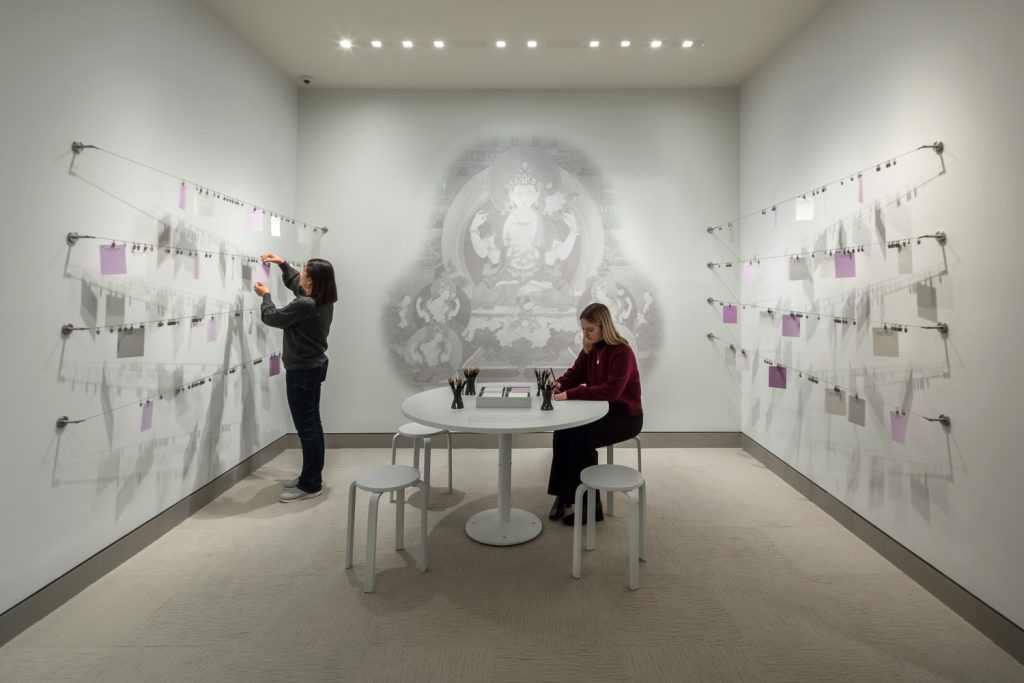
Installation view of “Death Is Not the End,” at the Rubin Museum of Art. Photo: David de Armas. Courtesy of the Rubin Museum of Art.
That sentiment is echoed in the design of the show, too. At the beginning is a box of sand where visitors are encourage to write something that they’ve lost, then rake it away. From there, the gallery walls progressively lighten in hue, and near the end of the show is a partition made of only fabric.
The latter structure implies “that there is something beyond the veil,” the curator noted. “The two portals it creates indicate a transitional space, indicating it is not the final destination.”
Pakhoutova didn’t bring up Dylan’s song, but she did mention a related quote—one so universal that it’s been attributed (erroneously, in most cases) to figures as varied as John Lennon, Oscar Wilde, and Fernando Sabino. (Where the quote actually came from remains the subject of debate.)
“Ideally, when [visitors] leave the exhibition, I want them to think along these famous lines: “In the end it’s going to be okay. If it’s not okay, it’s not the end,’” Pakhoutova said. “We could have used this as an unofficial subtitle of the exhibition.“
See more images from “Death Is Not the End” below.
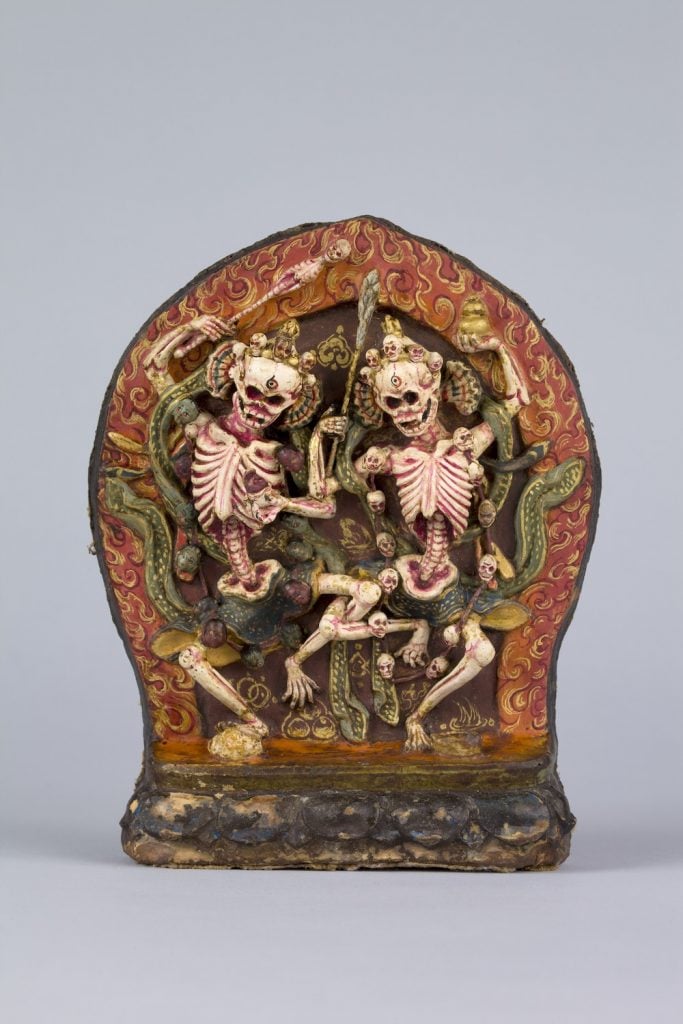
Lords of the Charnel Ground, Tibet (18th century). Photo: David De Armas, courtesy of the Rubin Museum of Art.
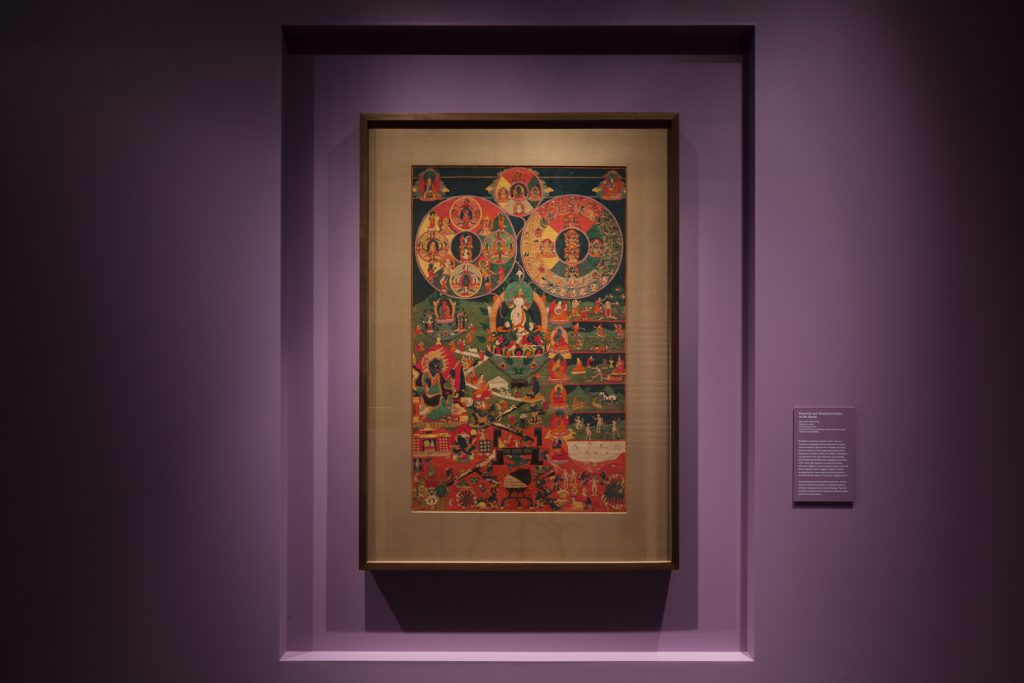
Peaceful and Wrathful Deities of the Bardo, Tibet (18th-19th century). Photo: David de Armas, courtesy of the Rubin Museum of Art.
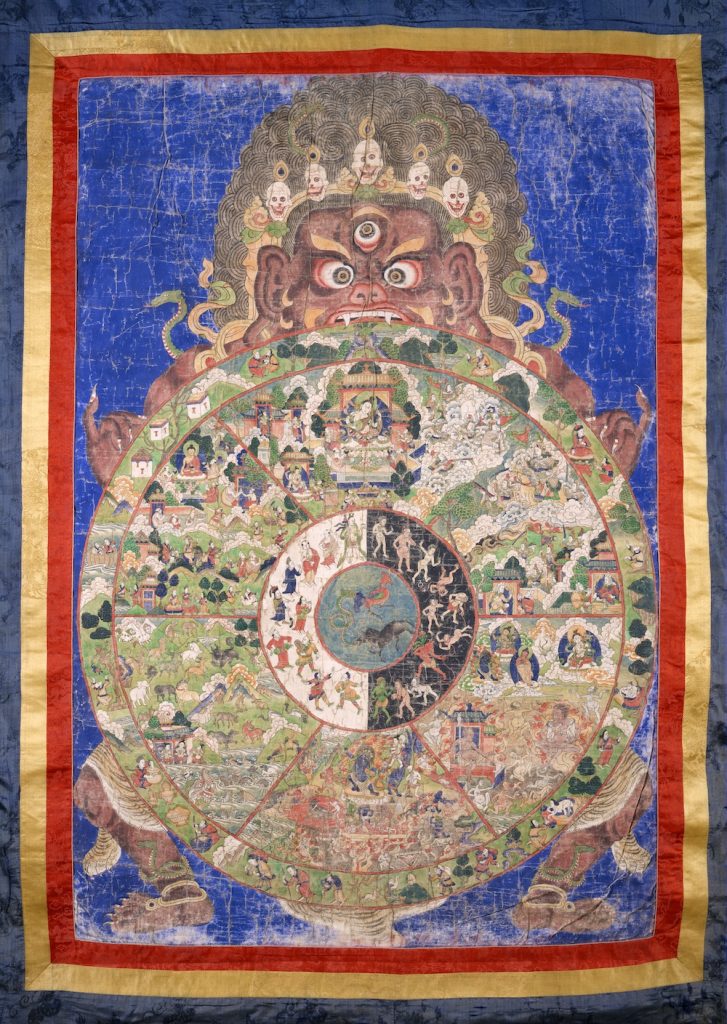
The Wheel of Life, Tibet or Mongolia (19th century). Photo courtesy of the Rubin Museum of Art.
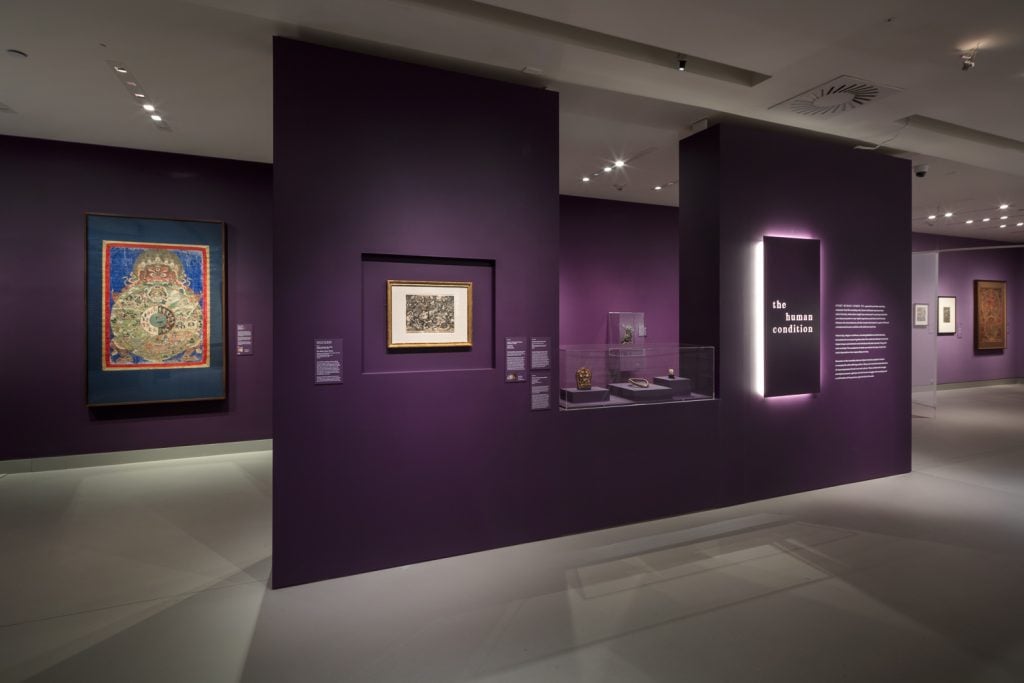
Installation view of “Death Is Not the End,” at the Rubin Museum of Art. Photo: David de Armas, courtesy of the Rubin Museum of Art.
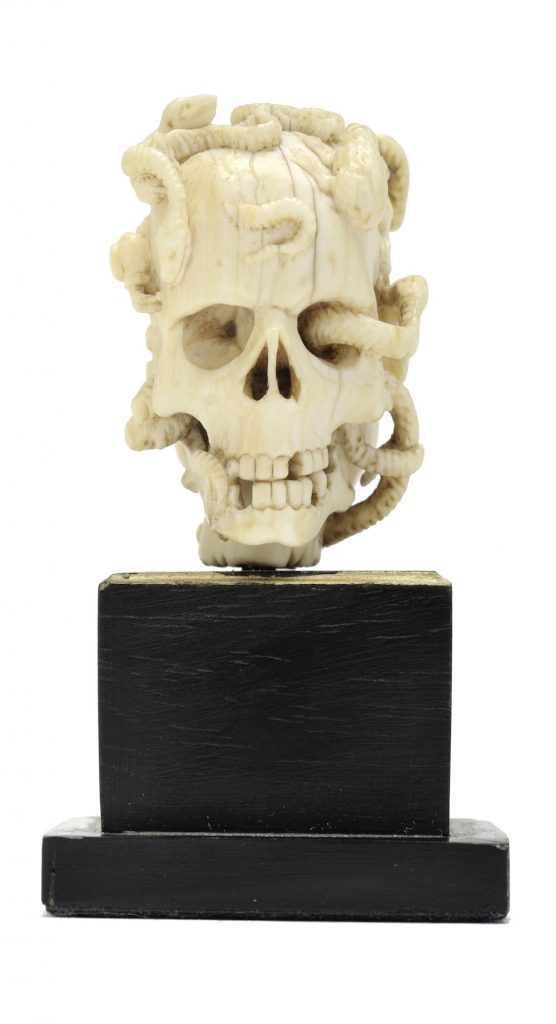
Memento mori prayer bead, Germany or the Netherlands (c. 1500–50). Photo courtesy of the Rubin Museum of Art.
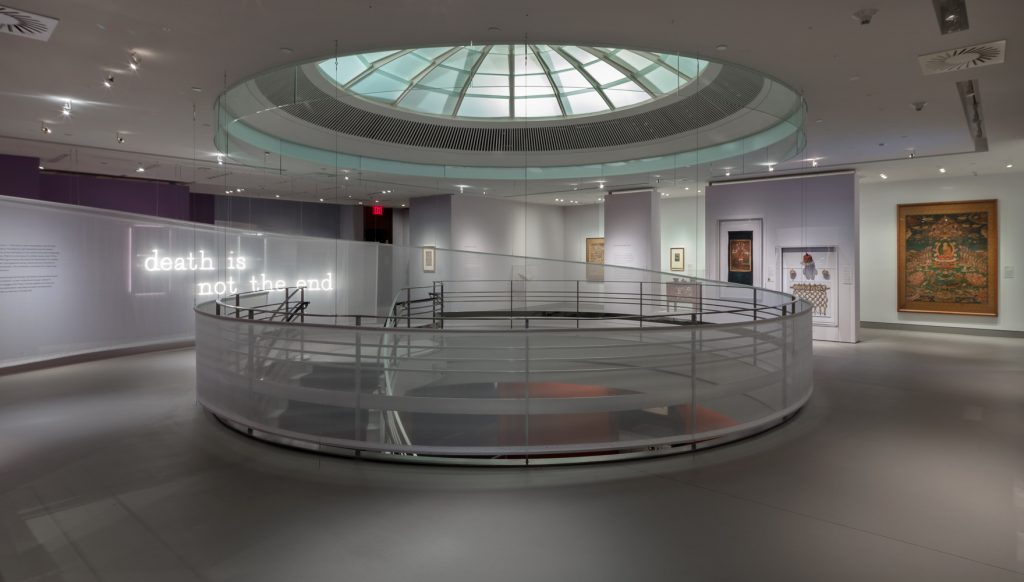
Installation view of “Death Is Not the End,” at the Rubin Museum of Art. Photo: David de Armas, courtesy of the Rubin Museum of Art.
“Death Is Not the End” is on view at the Rubin Museum of Art, 150 W 17th St, New York, through January 14, 2024.